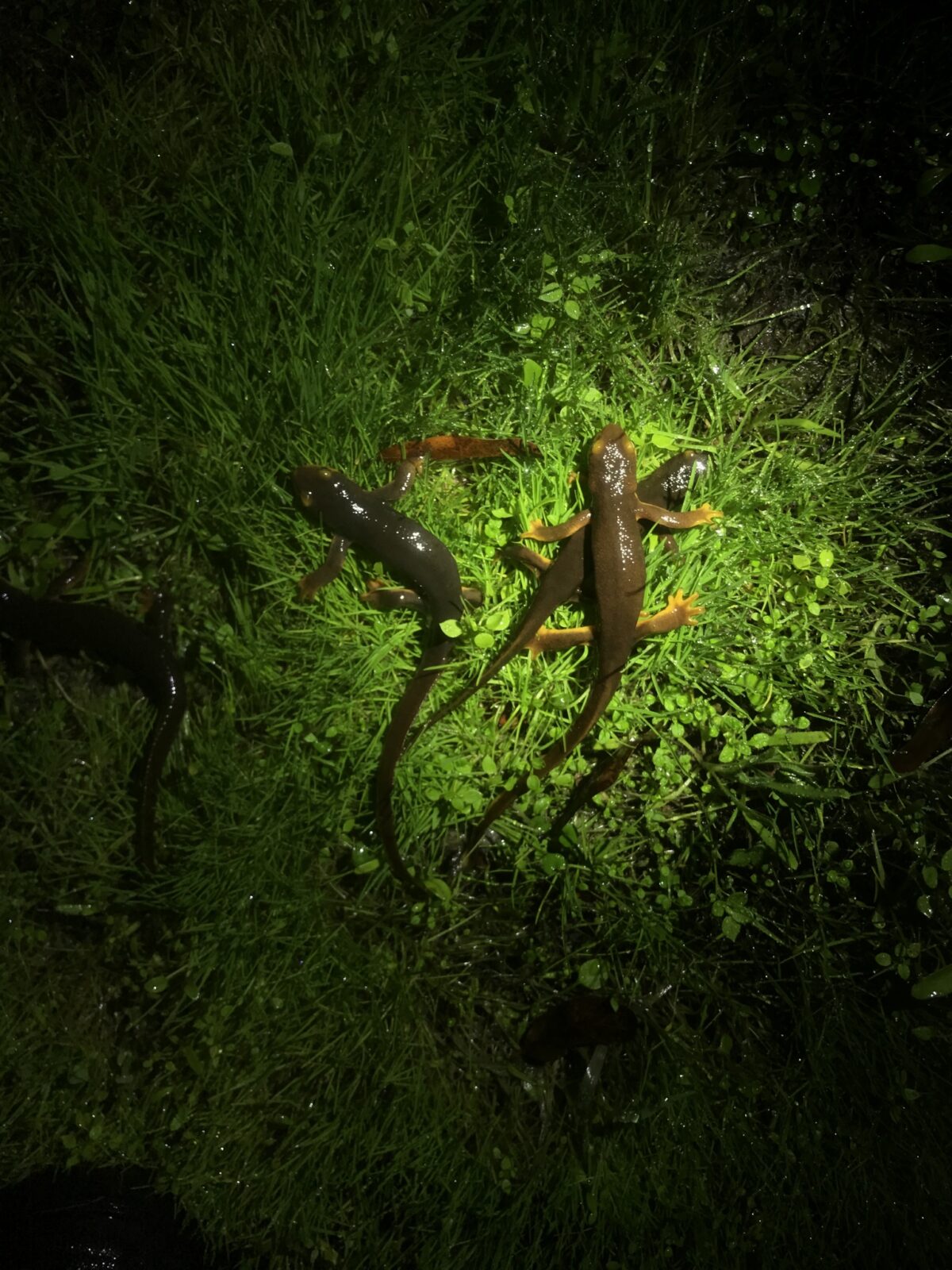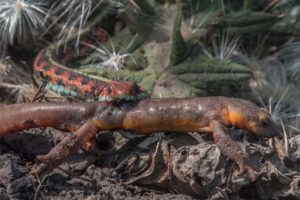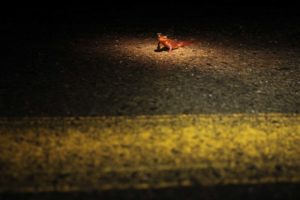In the past two weeks, iNaturalist users have recorded over 2,000 observations of the California newt, and another 400 of the similar-looking rough-skinned newt—signaling the start of a busy breeding season for the golden-eyed amphibians that travel to and from water bodies. But for Sally Gale, the founder of the Chileno Valley Newt Brigade, a North Bay volunteer group, the real surprise has been that nearly all the observations her team made were babies: newts just one or two inches long, likely making their life’s first forays outside of their birthplace of Laguna Lake.
“We’ve had twice the number of baby newts this year than we had last year,” Gale says—so far, that’s 9,387—“and last year we already thought we had an incredibly large amount.” Baby newts are also known as efts, to biologists and crossword enthusiasts.
Volunteers spend warm, rainy nights on the sides of Chileno Valley Road with camera equipment, buckets, and reflective vests, picking up newts and shuttling them to the other side of the road. Though it’s no major freeway, the country road, just west of Petaluma, sees its fair share of traffic, and not every newt spotted can be saved. (Bay Nature profiled the effort in January 2022.)

The observations suggest Lake Laguna’s newt population is growing. Gale’s team observed about 4,000 baby newts and 3,500 adults last year—a number that’s already been surpassed by this year’s juveniles alone. But it’s uncertain how much of the increase can be attributed to more newts, versus more eyes observing them, since the squad has recently grown to about 80 regular volunteers.
The appearance of several thousand baby newts left the volunteers “overwhelmed,” Gale says, unable to properly document each eft that they rescued. “In some areas, they blanketed the road,” Gale says. Even with sixteen volunteers, she says, she feels it was an undercount. “In some cases, we just threw them in buckets, released them, and then ran back to get more.”

From November through March, large groups of newts traveling together set out at night in search of pools of water. Here, they can place spermatophores—small capsules containing sperm—in hopes that females will pick them up. The larvae stay aquatic for about five months before the fledgling newts come out and take on the perilous journey across roadways, like their parents before them.
But traversing a single road can take a newt up to 30 minutes. In the past, this luxurious pace was made possible by their poisonous skin, which deters most predators. But tetrodotoxin can’t protect them from car tires. And even skilled drivers may have trouble spotting the two-inch beasts crawling across the road. Especially at night.
Newt mortality, then, remains high. Gale’s volunteers have counted 1,660 dead newts since the start of the season—meaning almost one in five newts observed were found dead.
But Gale’s efforts have caught on. This year, three people from Marin County and one from Santa Clara County have reached out to her and have asked how to start their own newt brigade. And the number of baby newts this year is certainly hopeful news.
“The bigger picture is road ecology,” Gale says. “I think people are becoming more aware and more concerned about road mortality.”
Dec. 4, 2023: This story has been corrected to define spermatophores as packages of sperm, not of unfertilized eggs.





